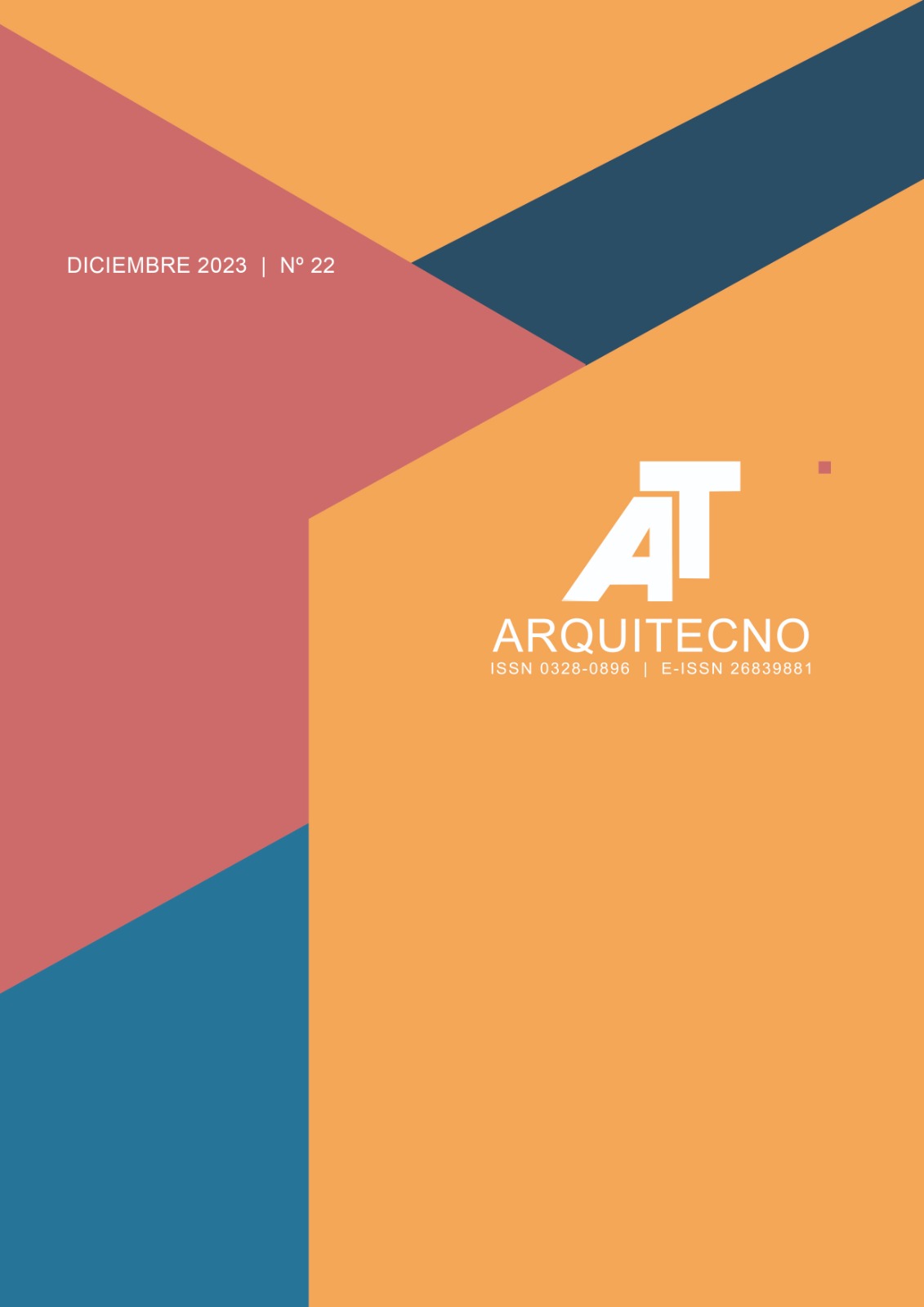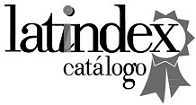Comportamiento higrotérmico y consumo energético de un centro de salud en San Miguel de Tucumán
DOI:
https://doi.org/10.30972/arq.227245Palavras-chave:
Monitoreo higrotérmico, Confort higrotérmico, Eficiencia energéticaResumo
El presente trabajo expone un estudio térmico-energético de un Centro de Atención Primaria de Salud (CAPS), ubicado en San Miguel de Tucumán. Se verifica el comportamiento de la envolvente en base a las normas IRAM: riesgos de condensación y coeficiente de transmitancia térmica. Se analizan los resultados obtenidos a partir de cuatro monitoreos higrotérmicos efectuados en las distintas estaciones del año y se contrastan con datos de temperatura y humedad relativa exteriores obtenidos en una estación meteorológica cercana. A partir de dichos datos, se evalúa el confort higrotérmico con las variantes PMV y PPD. Por último, se analizan los consumos energéticos, registrados en la factura de la empresa prestadora de servicio, en las distintas estaciones y comparan con los datos obtenidos del monitoreo. Este trabajo, tiene como objetivo generar una caracterización de parámetros asociados a la eficiencia energética y el confort térmico de CAPS ubicados en San Miguel de Tucumán.
Referências
ASHRAE (2004). ANSI/ASHRAE Standard 55-2004. Thermal environmental conditions for human occupancy. Atlanta.
Costantini-Romero, A. B., y Francisca, F. M. (2022). Construcción con bloques de suelo cemento como alternativa sostenible para envolvente edilicia. Hábitat Sustentable, 12, 114-125.
EDET S.A (s.f.). Mis facturas de energía. Recuperado el 15 de agosto de 2023 de https://www.edetsa.com/gestion/pwa/micuenta/facturas-de-energia
Fernández, A. y Garzón, B. (2020). Rehabilitación de muros exteriores en centros de salud en San Miguel de Tucumán para su eficiencia térmico-energética. AVERMA, 24, 31-40. https://avermaexa.unsa.edu.ar/index.php/averma/article/view/37/16
Flores Larsen, S., y Lesino, G. (2001). Modelo térmico del programa SIMEDIF de simulación de edificios. Energías Renovables y Medio Ambiente, 9, 15-24.
INTI (2005). Ahorro y certificación energética: la envolvente de los edificios. Saber cómo, (27), 4.
Kuchen, E., y Kozak, D. (2020). Transición energética Argentina. El nuevo estándar de eficiencia energética en la evaluación de la vivienda social. Caso de estudio: vivienda de barrio Papa Francisco. Revista hábitat sustentable, 10(1), 44-55.
Muñoz Rojas, R., Figueroa-San Martín, R., y Saelzer Fuica, G. (2023). Análisis comparativo en la rehabilitación de envolvente térmica de cerramientos educacionales con criterio ambiental. AUS [Arquitectura / Urbanismo / Sustentabilidad], (33), 04–11. https://doi.org/10.4206/aus.2023.n33-02
Nogar, A. G., Clementi, L. V. y Decunto, E., V. (2021). Argentina en el contexto de crisis y transición energética. Revista Universitaria de Geografía, 30(1), 107-131. https://dx.doi.org/https://doi.org/10.52292/j.rug.2021.30.1.0018
NORMA IRAM 11601 - Instituto Argentino de Normalización y Certificación. Aislamiento térmico de edificios. Métodos de cálculo. Propiedades térmicas de los componentes y elementos de construcción en régimen estacionario, 2002.
NORMA IRAM 11605 - Instituto Argentino de Normalización y Certificación. Acondicionamiento térmico de edificios. Condiciones de habitabilidad en edificios, 2002.
NORMA IRAM 11625 - Instituto Argentino de Normalización y Certificación. Verificación del riesgo de condensación por vapor de agua, 2000.
NORMA IRAM 11900 - Instituto Argentino de Normalización y Certificación. Modificación Nº1 a la Norma IRAM 11900:2017-12, 2019.
Secretaría de Energía, Dirección de Información Energética Subsecretaría de Planeamiento Energético. (2021). Balance Energético Nacional Serie histórica – Indicadores Actualizado al año 2021. http://datos.energia.gob.ar/dataset/balances-energeticos/archivo/b641b231-d255-4b8e-8bb2-065841b88dc4
Urteneche, E.; Martini, I.; Barbero, D. A. y Discoli, C. A. (2021) Estado del arte de la envolvente edilicia del subsector salud en la Microrregión Gran La Plata: Su estudio como punto de partida para el mejoramiento de la eficiencia energética a partir del reciclado edilicio; Asociación Argentina de Energía Solar; Avances en Energías Renovables y Medio Ambiente; 25; 49-59
Viegas, G. M., Barbero, D. A., Chévez, P. J., Martini, I., & Discoli, C. A. (2020). Reciclado masivo de la envolvente urbano-edilicia basado en procesamiento digital de imágenes, La Plata, Argentina. Revista de Urbanismo, 43, 151. https://doi.org/10.5354/0717-5051.2020.57522
Downloads
Publicado
Como Citar
Edição
Seção
Licença

Este trabalho está licenciado sob uma licença Creative Commons Attribution-NonCommercial 4.0 International License.
Los autores ceden a Arquitecno los derechos de publicación de sus trabajos, toda vez que hayan sido admitidos como parte de alguno de sus números. Ellos, no obstante, retienen los derechos de propiedad intelectual y responsabilidad ética así como la posibilidad de dar difusión propia por los medios que consideren.





52.jpg)
